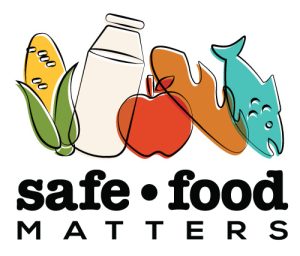
Glyphosate is the main pesticide being sprayed on Canadian forests. Spraying is a big a problem:
- for people who forage, including First Nations
- for forest animals
- for hunters
People who forage
People who forage for forest plants are at risk. Two recent studies show that glyphosate persists in forest plants for years, including in wild blueberries and raspberries. The University of Northern British Columbia studies are: (1)“The presence of glyphosate in forest plants with different life strategies one year after application” (2) “Glyphosate remains in forest plant tissues for a decade or more”. (BC Forest Studies)
The first study tested plants one year after spraying, and found glyphosate in newly grown shoots and berries that were not sprayed, which was not expected. All the plants tested positive for glyphosate, with the highest levels found in the roots. The take away is glyphosate is stored in the roots in the dormant season and moves (translocates) to newly growing shoots and berries the next spring.
The second study showed that glyphosate persists for up to 12 years in shoots and roots of some species, and up to three years in the fruits tested, raspberry and blueberry. Significantly, the levels detected were higher than the default maximum residue limit (MRLs) of Health Canada, even with berries:
“Although fruit contained the least residue of all tissue types on average, 26% of fruit samples contained concentrations greater than the 0.1 μg g- 1 MLR used by the Canadian Food Inspection Agency to assess glyphosate residue content in foods.” (p. 9)
The fact that 26% of fruit samples exceeded the Maximum Residue Limits shows there is a high risk of contamination.
And the risk of contamination is mostly to First Nations peoples. The one-year study looked at 10 species selected for their importance as traditional-use plants. The longer study looked at species important to local traditional plant users, and to the diet of moose, bears and other wildlife. Blueberries and raspberries were studied in both, and other species included cranberry, rose, cow parsnip, bunchberry, pink wintergreen, palmate coltsfoot, sweet-scented bedstraw, dogwood, fireweed and willow.
Health Canada says “If the CFIA finds a food with residues greater than the MRL or the default limit, it takes the appropriate regulatory action”. MRLs, human health, and food safety: How MRLs are set. Health Canada also says it conducts dietary risk assessments that examine the diets of vulnerable subgroups, as required by s. 7(7) of the Pest Control Products Act.
The agency in charge of pesticide management for Health Canada is the Pest Management Regulatory Agency (PMRA). It is incumbent on the PMRA to assess the dietary exposure of First Nations peoples to food foraged from the forest.
Animals of the Forest
Glyphosate is toxic up the entire food chain. It is fatal to aquatic organisms and kills all plants. It harms mammals and birds both directly and indirectly.
The direct harm is from exposure to spray. The indirect harm is from destruction of food sources and habitat. Forests are being converted from a mix of leafy/deciduous trees into plantations of evergreen/conifer “crops”. As this shift occurs, large animals are losing their source of leafy trees. Moose are starving, and deer numbers have drastically reduced in the last decades. (For more on this conversion to conifer forests, see Speaker Jame Steidle in this recent Glyphosate Tour).
Evidence and examples of the harms are below:
Harm to Small Animals and Birds
Glyphosate was re-registered for use on forests by PMRA in 2017, using the risk assessment set out in Preliminary Re-evaluation Decision 2015-01 (PRVD) (and approved by RVD2017-01). The PRVD showed that glyphosate moves to critical areas of the animal:
“Approximately 1-5% of the administered does (AD) was distributed in the gastrointestinal (GI) tract, liver, kidneys, bone, lungs, spleen, salivary glands and brain”. (p.11)
The PRVD health risk assessment looked at toxicity studies on mice, rate, rabbits and dogs, and found “clinical signs of toxicity were consistently observed in all test species”, and “Additional target organs of toxicity were liver and kidney in rats and dogs” even at the low doses.
- In short-term, 90 day studies salivary glands were altered, and the weights of key organs and sperm counts and testis weights were altered.
- In longer term, 2 year studies (the maximum), there was maternal toxicity, malformations of fetuses and decreased body weight of offspring, among other chronic effects. (PRVD, pp. 11-13)
The PRVD environmental assessment found the “level of concern” (LOC) for acute oral exposure was exceeded for all sizes of insectivorous and herbivorous mammals, and for small and medium sized frugivores (fruit eaters), even when the assessment was refined (PRVD p. 35-36). The exceedances were up to 11 times the LOC for some animals, yet PMRA concluded the risk was low.
In relation to birds, the PRVD found the LOC was exceeded for acute oral and dietary exposure, by 19 times in some instances. (Table X.23, p. 213 PRVD). And the PMRA didn’t even look at direct exposure from spraying:
“It should be noted, however, that exposure to the sprayed formulation, which could occur via preening if birds are sprayed directly or through spray drift, was not considered in this assessment…” (p.34)
The Canadian Forest Service (CFS) reports that glyphosate causes reductions in numbers of small mammals and birds, “as an indirect result of changes in their optimal vegetative habitat”. (Frequently Asked Questions on the Use of Herbicides in Canadian Forestry). (The CFS also cites 2 studies to suggest that “numbers [of small mammals and birds] return to normal levels within 2-3 years…”. However a review of the studies shows they do not speak to the return of small animals or birds at all, but just look at the diversity of food and small animals for the years after spraying. They assume that since food plants have grown, the same animals have come back).
Real World Examples
Trappers: A decline in populations of rabbits, porcupine, beavers and songbirds has been noted by trappers over a 30 year period, as detailed in Trappers in Robinson Huron treaty area want aerial herbicide spraying to end.
Data collected by trappers on animal rodent species in Ontario showed that 85-135 rodents populated a one hectare area within Trapline BL11, including Pygmy shrew, white footed mouse, red backed vole, bog lemming, meadow mouse, woodland jumping mouse, red squirrel and deer mouse. Cutback areas subjected to glyphosate spraying in the same trapline had rodent population of 0 to 3 rodents per hectare several weeks after the spray. The data was collected using a Canadian Wildlife Service methodology.
Birds. In Eastern Canadian forests, over 90 % of 54 common bird species experienced habitat declines between 2010 and 2020 as a consequence of intensive forestry practices including spraying. (University of Oregon pre-print study referenced in Giving Up Glyphosate)
Harm to Large Animals
Ungulates like moose and deer require massive amounts of food. Spraying changes the composition of the forest and the food it provides. Glyphosate kills or drastically reduces the quantity of deciduous food these large animals can browse, and the newly planted conifer “crops”, once established, don’t allow the browse to grow.
The animals leave sprayed areas, looking for better food. The CFS reports “Similar scenarios [animals leaving] may occur with large mammal species (e.g., moose, deer) which may avoid treated sites for a few years post-treatment while the supply of their favoured browse species is reduced”. (The CFS also cites 2 studies to suggest that large mammals seek out those sites preferentially in later years when their browse (food) species re-establishes on the site. However a review of the studies shows they do not speak to the return of large mammals at all but again just look at the quality of the browse/mammal food.)
Real World Examples
Bush pilots report not seeing moose on sites for years after spraying: see “It’s a dead forest”.
Moose decline in British Columbia
Populations of deer and moose have plummeted in areas where “forest management” occurs. In B.C., the population of moose has declined by 50-70% since the early 2000s in some areas. The B.C. Ministry of Forestry found that over 50% of the cows who died from 2012 to 2022 were considered to be in “poor condition” (21%), with 30% being in a “state of acute malnutrition”. After predation by wolves, poor health was the leading cause of death. (Of course, animals in poor health are more prone to be prey for predators).
Initial thinking was the decline was due to “landscape change” associated with the mountain pine beetle outbreak, but this has not borne out. A new theory is that “apparent starvation” is being influenced by “intensive forest development” (Mumma and Gillingham 2019). Research in the works will look at “shifts in moose diet from disturbed landscapes” and “response of moose to different silviculture practices”. (Factors Affecting Moose Population Declines in British Columbia May 2022 Progress Report)
Deer decline in New Brunswick
In New Brunswick, the population of deer declined 70% from 1985 to 2014 – from 270,000 in 1985 to 74,000 in 2014. See: New Brunswick deer herd down 70% in 30 years, DNR numbers show.
The population of deer hunted and killed (harvested) in New Brunswick also plummeted, declining by over 86% from 1985 to 2015. The harvest in Quebec, which has not permitted spraying since 2001, has increased almost three-fold:
Hunters of Wild Game
The numbers of wild game are declining, as seen above. Plus, based on the BC Forest Studies, animals who eat berries and shoots in sprayed areas could be eating glyphosate for up to 3 and 6 years after spraying, respectively. The risk to hunters who hunt and eat such animals are not known. Although glyphosate does not appear to accumulate in flesh, the PMRA assessment shows it moves to critical organs and causes toxic effects. It makes animals sick.
The PMRA has not assessed the risks to animals or to humans of spraying pesticides on forests. When asked if it safe to send hunters into sprayed areas, the PMRA response was it had not assessed exposure to forest vegetation or to wild game, but it recommended a 3 day interval between spraying and hunting – because this is the interval used for harvest of livestock:
“While the PMRA does not directly assess the anticipated residues of a given pesticide in edible forest vegetation, nor is the dietary burden of pesticides to wild game specifically determined; data submitted to the Agency in support of the registration of a pesticide on livestock feed crops may be used as a basis to estimate the potential exposure to wild game. Residue data are on file for glyphosate in agricultural feed crops harvested at intervals as short as 3 days after the last application (DALA).” (PMRA email with Joel Theriault)
The interval used for livestock in the United States is 8 weeks between broadcast spray of glyphosate and grazing, with the caution that “The chemical may also have potential to be retained by the animals and be present in the slaughtered carcass.”
Regardless, any interval measured in “days” or “weeks” is not protective. Entry intervals do not address the fact that high levels of glyphosate persist in animal food for years and move to critical areas of the animal.
Risks Not Acceptable
Forest spraying of glyphosate is harmful to forest plants and animals, and presents health risks to foragers and hunters that have not been assessed.
Registration of a pesticide requires proof that the risks of pesticide are acceptable to human health and the environment. This standard cannot be met in the case of forest spraying of glyphosate.
The registration should be revoked.
This post is part of a series on Forest Spraying being published, including posts on the faulty federal approval, unsafe food and ramped up risk of forest fires.


